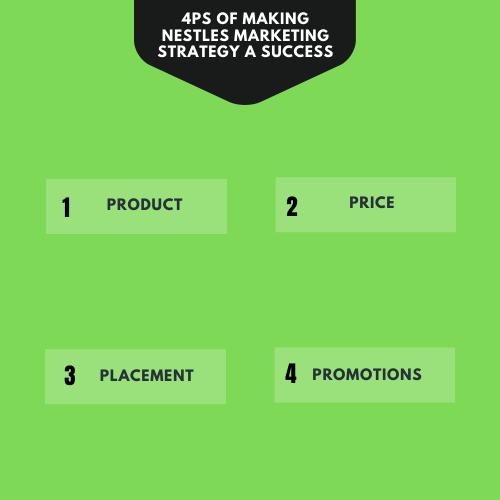Role Of Nestle Marketing Strategy In Achieving Success
Question
Task: How nestle marketing strategy contributed towards brand success?
Answer
Introduction
Developing an effective nestle marketing strategy is important towards building a brands reputation and expansion in a market. Food, cosmetics and health products continue to be the most demanded global consumer products, making it the most lucrative industry today. It has resulted in consumer product companies like Nestle, Britannia, Proctor and Gamble, Colgate-Palmolive Company and Unilever Limited to fall among the largest and top-ranked companies globally (Schmitt 2012). Among this Nestle is the biggest and recognized as a leading global consumer product manufacturer offering several consumer products ranging from food to detergents and cosmetics. Nestle has reported exponential growth over time with the company continuing to report gains year on year. The success of nestle marketing strategy is attributed to changing lifestyles, and as more people adopt modern lifestyles, the demand for Nestles products continues growing. There has also been an increasing change reporting on sopping trends among consumers in the 20th and 21st centuries. More consumers prefer purchasing well-recognized brands instead of locally produced products due to higher quality, social status and trust. It has been exceptionally true among consumers during 2020, whereby consumers are noted to opt for the branded product instead of local brands amid the COVID 19 Pandemic. Hygiene has been the main factor identified in nestle marketing strategy that is driving customers. Today customers prefer automated manufacturing and packaging processes than conventional hand packaging. As a result, well-established brands like Nestle have continued to report high demand among consumers despite many smaller brands reporting huge sales reduction.
Role of 4P towards making the nestle marketing strategy a success
Nestle has grown to become the most significant consumer product manufacturer due to its adoption and use of 4P marketing strategy. Nestle marketing strategy takes into close consideration product, price, placement and promotions, which help build consumer confidence and trust (Goi 2009). Strategic planning based on consumer needs and expectations and a high emphasis on quality have allowed the company to consistently register growth and expansion across the globe.

Product Diversity
nestle marketing strategy involves offering a wide product range covering practically every domestic consumer product requirement, thus tapping into a vast consumer market. It is important as it helps deliver intense competition in the market where consumer prefers using one brand to monitor quality. Nestle mainly focuses on developing and selling food products, which is a primary requirement among all people. The brands cater to all forms of food production, starting from baby formulae and extending to adult food items. Cerelac Infant Cereal is one example of a product many people worldwide are familiar with today, with many of the parents opting for this semi-solid food product offered to babies. Nestle marketing strategy has helped the brand expand its product range to catering to food items for all ages.
Competitive Pricing
Another nestle marketing strategy involves offering products at competitive pricing while still maintaining high quality. Nestle is the largest consumer product manufacturer and retailer, also allows the brand to secure raw materials at competitive prices and bulk manufacturing, reducing the cost of productions. The company can then deliver its product at low prices, making them affordable and the consumer's preferred choice. Attract and retain consumers; each company needs to balance offering high-quality products and ensure the products are affordable. Nestle has adopted a universal pricing strategy that allows the brand to reach out to many customers falling into various income groups. It is well known that every parent wants to provide the highest quality products to their growing children, but at the same time, the brand also needs to keep in mind product affordability. Overpricing the products will limit consumer baskets which will negatively impact the brand sales. At the same time, it’s essential to offer prestigious products that allow the brand to tap into higher income groups and secure higher profits. Combining the quality and pricing parameters has permitted Nestle to tap into a large consumer market with products suitable for each income bracket. Nestle marketing strategy also focuses on distributing its manufacturing and distribution units across most continents to help balance product quality and pricing, which reduces logistical and production costs, allowing the brand to offer an equal balance between quality and affordable pricing.
Brand Product Placement
Nestle marketing strategy has helped build a positive reputation among its consumers globally, by placing most of its products high on the quality scale. Nestles high product quality placement helps keep the brand products popularity allowing the brand to retain its customer market. To monitor and maintain the brand's reputation and consumer confidence, the brand has put customer care and complains cells where the contact information is printed on each of nestles products made publicly available on multiple communication media. It is important towards nestle marketing strategy success as it helps Nestle identify issues with the products at a grass-root level. It then allows nestle to make the necessary modifications and changes to modify and improve their products which ultimately lead to retaining customer confidence.
Product Promotion
Marketing is the next important nestle marketing strategy, but unlike other brands, nestle has adopted a unique strategy. Nestle invests heavily on both modern and traditional marketing strategies that see the company using a wide range of marketing medium to keep all brand customers aware of the new products and changes and improvements to the older product (Simpson et al. 2006). It is important to note that Nestle does promote their products but has adopted a minimum promotion policy due to the adverse effects over promotion can have on a brand. Over advertising can indicate a brand is experiencing problems; therefore, it is essential to limit product promotion. The approach has resulted in Nestle only promoting its new products, with rare cases of old and well-established product promotion being published. The brand reputation among consumers is also influenced by its promotional strategy. These results nestle marketing strategy adopting a self-promotional technique as opposed to aggressive promotion. Products such as Cerelac Infant Cereal being a self-promoting product that does not require the brand's intervention since many happy consumers will automatically recommend the product.
Corporate Social Responsibility Projects of Nestle
Ranked as the most significant consumer product manufacturer globally also places the brand in the limelight making CSR an important factor in nestle marketing strategy. Nestle has adopted corporate social responsibility with wide arms open and is involves multiple CSR projects globally. Nestle is noted to handle several dozen CSR projects in different nations worldwide, covering environmental and social concerns, making the company a leading contributor to CSR. Most projects are designed to educate rural communities regarding critical social concerns such as HIV awareness and prevention, population and waste management (Márquez & Fombrun 2005). Nestle also heads corporate social responsibility programs that handle industrial and commercial concerns such as reducing packaging waste which is an important project linked to minimizing polythene packaging waste and managing the packaging materials retrieved from manufactured consumer products. Youth Training camps are another important program being spearheaded by Nestle (Batra et al. 2012). The aim is to offer education and training opportunities to communities in and around areas Nestle manufactures their products. By adopting CSR as part of the brands nestle marketing strategy that brand can provide technical training camps communities are empowered. It enables the communities to develop the required skills needed to spearhead their income generation ventures, thus reducing unemployment rates.

Conclusion
Nestle has grown to be among the largest Consumer product manufacturer globally, and the company has invested heavily towards developing and building its brand name and product range. Combining the 4Ps has allowed the brand to address various aspects linked to each of their products, thus helping the brand tap into a larger consumer market. Products, Pricing, Placement and promotion have all been used by the brand effectively and continue to be closely monitored to help the brand continue expanding its operations worldwide. The brand is also noted to be a significant contributor toward corporate social responsibility which is also an essential requirement that must be addressed by all businesses across the globe. In addition to offering consumer products to the public, local communities are also benefiting from Nestle. The brand understands that each individual’s per capita income will ultimately positively affect brand sales over the long term perspective. The strategy is aimed at addressing CSR issues among the community. At the same time, nestle marketing strategy also encourages higher income generation, which leads to surplus income and increases spending power among the public.
References:
Batra, R., Ahuvia, A. & Bagozzi, R.P., 2012. Brand Love. Journal of Marketing, 76(2), pp. 1–16.
Goi, C.L., 2009. A Review of Marketing Mix?: 4Ps or More?? International Journal of Marketing Studies, 1, pp. 2–15.
Márquez, A. & Fombrun, C.J., 2005. Measuring Corporate Social Responsibility. Corporate Reputation Review, 7(4), pp. 304–308.
Schmitt, B., 2012. The consumer psychology of brands. Journal of Consumer Psychology, 22(1), pp. 7–17.
Simpson, M. et al., 2006. Marketing in small and medium-sized enterprises. International Journal of Entrepreneurial Behaviour \& Research, 12, pp. 361–387.












